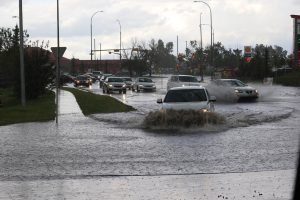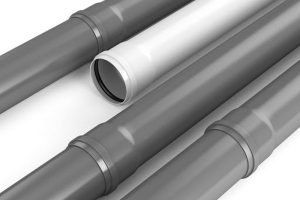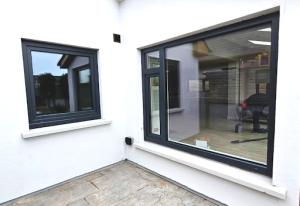Last Updated on February 8, 2025 by teamobn
Water damage can strike when you least expect it—whether it’s from heavy rainfall, burst pipes, or a leaking roof. When it happens, it’s not just an inconvenience; it can lead to costly repairs, mold growth, and even structural problems if not addressed quickly. That’s where
water mitigation comes in. This process helps stop further damage and protects your home – and your wallet, from unnecessary stress.
In this guide, we’ll walk you through everything you need to know about water mitigation, how it differs from restoration, and why professional help is essential. Plus, we’ll share some tips to prevent water damage before it starts. Let’s dive in!
Contents
What Causes Water Damage?
Water damage can happen in many ways, and unfortunately, it often catches homeowners off guard. Some common causes include:
– Heavy Rainfall: Storms and flooding can overwhelm your home’s defenses.
– Burst Pipes: Sudden temperature changes or old plumbing can lead to leaks.
– Leaking Roofs: Missing shingles or worn-out seals can let water seep in.
– Appliance Failures: Washing machines, dishwashers, and water heaters can malfunction and cause spills.
No matter the cause, water damage requires immediate attention. The longer water sits, the more damage it causes—think mold, weakened structures, and ruined belongings.
Water Mitigation vs. Water Damage Restoration: What’s the Difference?
You might have heard the terms “water mitigation” and “water damage restoration,” but what do they mean? While they’re related, they serve different purposes:
Water Mitigation: Stopping the Problem
Water mitigation is all about preventing further damage after water enters your home. The goal is to act quickly to minimize harm and avoid bigger issues down the road. Here’s what it typically involves:
– Removing Standing Water: High-powered pumps and vacuums get rid of water fast.
– Drying and Dehumidifying: Industrial fans and dehumidifiers dry out walls, floors, and furniture to prevent mold and structural damage.
– Sanitizing: Antimicrobial treatments are applied to stop bacteria and mold from growing.
Think of water mitigation as the first line of defense—it stops the problem from getting worse.
Water Damage Restoration: Fixing the Damage
Once mitigation is complete, restoration takes over. This step focuses on repairing and rebuilding your home to its original condition. It includes:
– Replacing damaged materials like drywall, carpets, and flooring.
– Fixing structural issues such as warped walls or ceilings.
– Cleaning and sanitizing the space to make it safe and livable again.
In short, mitigation prevents further damage, while restoration fixes what’s already been affected. Both are crucial, but mitigation always comes first.
The Water Mitigation Process: How It Works
When you hire a professional water mitigation team, they follow a step-by-step process to protect your home. Here’s what you can expect:
1. Inspection and Assessment
– Experts assess the extent of the damage by checking walls, floors, and ceilings for moisture.
– They identify the source of the water and create a plan to address it.
2. Water Extraction
– Using powerful pumps and vacuums, they remove standing water from carpets, furniture, and other areas.
3. Drying and Dehumidification
– Industrial fans and dehumidifiers dry out the affected areas to prevent mold and further damage.
4. Cleaning and Sanitization
– Surfaces are cleaned and treated with antimicrobial solutions to ensure your home is safe and healthy.
5. Structural Repairs
– Any damaged materials are repaired or replaced, and preventive measures (like fixing leaks) are put in place to avoid future issues.
This systematic approach ensures your home is thoroughly protected from start to finish.
Why Hire a Professional Water Mitigation Service?
While it might be tempting to tackle water damage yourself, hiring a professional service is almost always the better choice. Here’s why:
1. Advanced Equipment
Professionals use high-powered tools like industrial pumps, fans, and dehumidifiers that most homeowners don’t have access to. These tools ensure water is removed completely, preventing hidden moisture and mold growth.
2. Mold Prevention
Mold can start growing within 24–48 hours of water exposure. Professionals combine water extraction with antimicrobial treatments to stop mold in its tracks.
3. Insurance Assistance
Filing insurance claims can be confusing, but many water mitigation companies help document the damage and streamline the claims process.
4. Faster Results
Professional teams work quickly and efficiently, reducing the risk of secondary issues like structural damage and mold infestations.
5. Peace of Mind
Knowing that experts are handling the situation allows you to focus on getting back to normal life.
How to Choose the Right Water Mitigation Company
Not all water mitigation services are created equal. Here’s what to look for when choosing a company:
– Certifications and Experience: Look for companies certified by the IICRC (Institute of Inspection, Cleaning, and Restoration Certification) with years of experience.
– Emergency Services: Ensure they offer 24/7 emergency response for quick action during crises.
– Reputation: Read customer reviews to gauge their reliability and quality of work.
– Licensing and Insurance: Verify that they’re properly licensed and insured to protect you from liability.
– Transparent Pricing: Avoid surprises by choosing a company that provides clear pricing upfront.
– Insurance Support: A company that assists with insurance claims can save you time and hassle.
Taking the time to find the right company can make all the difference in protecting your home.
Preventive Measures to Avoid Water Damage
An ounce of prevention is worth a pound of cure! Here are some steps you can take to reduce the risk of water damage:
– Schedule Regular Plumbing Checks: Have a professional plumber inspect your pipes and fixtures for leaks or wear and tear.
– Inspect Your Roof: Check for missing shingles or signs of wear, especially before stormy seasons.
– Install a Sump Pump: If you live in a flood-prone area, a sump pump can help divert water away from your foundation.
– Clean Gutters and Downspouts: Keep them free of debris to ensure proper water flow.
– Seal Foundation Cracks: Prevent water from seeping in by sealing any cracks in your foundation.
– Use Leak Detectors: Place these devices in high-risk areas like basements and kitchens to alert you to leaks early.
By staying proactive, you can save yourself from costly repairs and headaches down the road.
Final Thoughts
Water damage is no small issue, but with quick action and the right help, you can protect your home and avoid unnecessary expenses. Remember, water mitigation is your first step in stopping further damage, while restoration handles the repairs. By choosing a trusted professional and taking preventive measures, you can keep your home safe and sound.
If you’re facing water damage, don’t wait—contact a skilled water mitigation specialist today. Protecting your home is one of the best investments you can make, and peace of mind is priceless.








